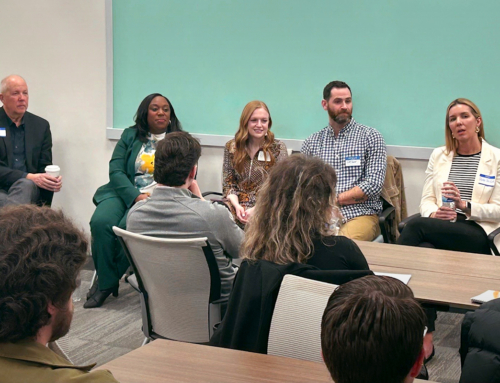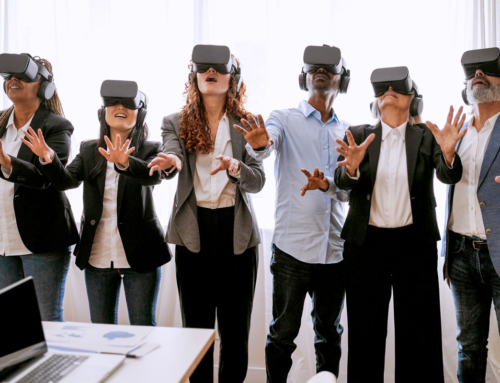Schoolkids sporting new backpacks are beginning their annual rite, climbing aboard yellow buses, eager — or, at minimum, obliged — to learn. College students, meanwhile, are hauling their belongings into dorms around the country.
But what about the rest of us? Long after formal education has ended, a thirst for learning has been found time and again to be a critical driver for individuals’ personal and professional fulfillment and success.
For organizations, prioritizing continuous learning is equally important, as McKinsey & Co., the world’s largest strategy consulting firm, makes clear: “A focus on learning and renewal attracts and generates an engaged, productive, and loyal workforce. Learning is also critical for an organization’s ability to influence, adapt to market conditions, and thrive over the long run.”
How can companies embed learning into their culture and find everyday ways for employees — not just those who spend their free time studying for an MBA or pursuing continuing education credits — to acquire new skills and knowledge?
Here are a few suggestions:
Look within
There are countless learning opportunities outside your organization, from industry association events to conferences to free or low-cost online resources. In fact, in this earlier article we explore some of those options.
But don’t overlook the knowledge that can be shared within your own camp. Arrange cross-departmental brainstorming sessions to unlock new ways of tackling problems. The communications team and the sales department, for example, might get few chances to interact, but each has things to teach the other. Consider regular speaking events and presentations where people can learn new ways of doing things and gain a more 360-view of the company.
Switch up regular staff meetings occasionally to focus on skills-sharing and learning how colleagues on different accounts, territories or teams approach their job. Let people show off big projects or campaigns they’ve worked on. Chances are, even their cubicle-mate might not understand all the in’s and out’s of how that important initiative was tackled unless they’re on the same project.
At Vehr, we’ve long prioritized professional development, but we’ve recently made a more intentional effort to learn from each other. Some of our regular staff meetings are now learning sessions, where an individual gives a deep dive into how they pulled off a win, what worked well, how they dealt with setbacks, why certain techniques were the right solution, and more. We listen, ask questions, pick up some tips and enjoy seeing our co-workers’ strategic work in the spotlight.
Lift and climb
Another way to mine the mother lode of knowledge within your organization is to formalize coaching and mentoring relationships.
Sure, members of any effective work team are probably already casually tapping their co-workers for tips and advice. It’s part of the back-and-forth of a healthy group of colleagues: The in-house SEO guru helps her teammate refine search parameters. Someone sends a group email looking for advice on how to improve their story pitch or for the name of a talented videographer. A writer is struggling to make a social media post pop, and a co-worker offers a clever way to add zing.
That kind of sharing “lifting and climbing” builds better work environments, boosts morale and results in better work. Why not supplement those organic interactions with a more deliberate approach?
If you don’t already have a mentor-mentee system, consider creating one — with informal but regular check-in meetings and specific goals. This shouldn’t be confused with a performance review; instead, it’s a chance for employees to get advice, talk over hurdles and learn some new tricks. The mentor need not be their supervisor, just someone with more or different experience who can share some knowledge.
Creating a formal coaching system can be useful, too — again, with a regular cadence of check-ins and clear goals. Perhaps someone on the team would love to gain basic graphic design skills; assigning someone from the art studio to coach them a little bit at a time — perhaps an hourlong meeting monthly with a short practice assignment in between sessions — can be a great experience for both parties.
Tap your network
Another simple way to create a continuous learning environment is to tap into your outside network. Chances are, every member of your team has interesting friends and professional contacts who could teach your group a thing or two — and would probably be happy to do so.
Brainstorm to reveal the type of information people hunger for, as well as gaps in the team’s skill sets and knowledge base. Then reach out to people in your network to see if they’d be willing to talk with your team, give a formal presentation or just shoot the breeze over lunch.
You’re looking for guests whose areas of expertise are relevant and perhaps parallel to your team’s mission, but not redundant — folks who can teach everyone a thing or two.
We’ve had some great guests join the Vehr team over the past six months, all with areas of expertise that align with our core strategy — local journalists, marketing gurus, media attorneys and communications leaders from prominent arts organizations. They’ve all shared stories and insights and indulged our curiosity.
The school of life
We may not be boarding a big yellow school bus any time soon, but that doesn’t mean any of us ever has to stop learning.








